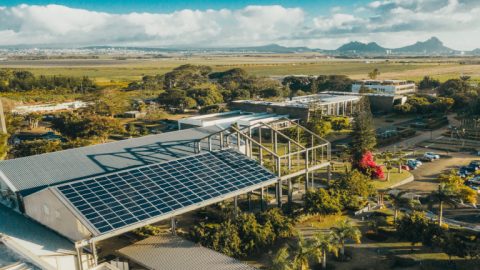The incorporation of renewable sources like Photovoltaic (PV systems) into power grids has become important in our journey toward sustainability. The growth of grid-connected PV systems is remarkable, allowing us to harness solar energy and contribute power back to the grid. However, this integration comes with its own set of challenges, particularly the need for advanced protection mechanisms to manage reverse power flow. Reverse power flow is basically a phenomenon that demands attention to ensure grid stability and reliability.

Reverse power flow occurs when the direction of energy transfer in an electrical system reverses from the conventional path. Traditionally, power flows from the utility grid to end-users. With decentralized energy resources like PV systems, there’s potential for power to flow back into the grid.
It’s important to discuss power flow in terms of mathematical formula which will help you understand it easily;
P=VI cos
Here, θ shows the power factor angle related to Active power (P).
This bidirectional flow challenges the traditional one-way power model, requiring a shift in protection strategies. Reverse power flow controller as shown in Figure 1 is necessary to be incorporated in the circuit.
Want to ensure your PV system is protected with the latest advancements? Discover how our solutions can enhance your solar performance.
Importance of Reverse Power Flow in PV Systems
Effectively managing reverse power flow in grid-connected PV systems is necessary. As solar installations increase, power dynamics change. Traditional power systems were designed for unidirectional flow, and the introduction of new power sources demands special attention.
- Grid Stability and Reliability
The delicate balance between power generation and consumption is crucial for grid stability. Uncontrolled reverse power flow can disrupt this balance, leading to voltage instability and frequency fluctuations. Robust protection is necessary to maintain grid reliability.
- Equipment Stress and Aging
Electrical equipment within the grid is designed for specific parameters. Reverse power flow can stress equipment beyond limits, accelerating wear and compromising component lifespan. Incorporating power factor correction (PCORR) is necessary to get the required output factor without any losses.

- Safety Concerns for Workers
Reverse power flow poses risks for utility workers assuming power lines are de-energized during maintenance. Adequate protection prevents hazardous conditions.
- Regulatory Compliance
Adherence to regulatory standards is imperative. Effective reverse power flow protection ensures compliance with regulations governing grid operation and renewable energy integration.
Reverse Power Flow Protection Mechanisms
Advanced protection mechanisms are necessary to address reverse power flow challenges in grid-connected PV systems:
- Overcurrent Protection
Devices like relays and fuses protect against abnormal currents by disconnecting the system promptly.
- Voltage Regulation
Smart inverters adjust voltage dynamically, maintaining grid voltage within acceptable limits during reverse power flow as shown in Figure 2. The voltage stability index (VSI) is used to know the voltage instability in power lines. Below is the formula to calculate VSIs when you know the rated power and voltage;


- Frequency Monitoring and Control
Monitoring frequency is pivotal. Control mechanisms prevent deviations that could compromise grid integrity. Understanding frequency deviation F(t) is necessary to get power without any disturbance.

- Islanding Detection
Islanding is a condition where power is supplied to equipment without an assigned connection. Algorithms detect grid islands, preventing safety risks during a blackout by disconnecting the PV system promptly.
Conclusion
As renewable energy integration increases, the role of reverse power flow protection becomes critical. Emerging technologies like advanced sensors, machine learning, and artificial intelligence will revolutionize protection strategies, ensuring more adaptive and responsive systems. The near future shows seamless renewable energy integration with robust protection mechanisms ensuring reliable, safe, and sustainable power systems.
In conclusion, understanding and managing reverse power flow in grid-connected PV systems is crucial for successful renewable energy integration. As the energy landscape evolves, innovative protection mechanisms will shape the future of sustainable and resilient power systems.


































